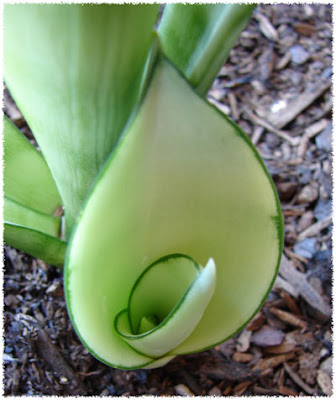Agave parryi
var. hauchucensis, commonly called Fort Hauchuca Agave, is native to Cochise County, in southeastern Arizona. It is a varietal of A. parryi, and has a shorter, wider leaf than the A. parryi, with pronounced leaf indentations. It's a great Agave for the low desert. It takes full sun, and is cold tolerant to 10 degrees Fahrenheit. Once established it needs very little water. Although it freely offsets, it is a slow grower. My Fort Hauchuca Agave plants have been in the ground for three years, and are still quite small, with no offsets. The long, brown terminal spines are somewhat wavy on close examination. The marginal spines are also brown.When this Agave gets older it will send up a 12 foot stalk in summertime. At the top of the stalk, lemon yellow flowers will emerge. The flowers are quite attractive and last for several weeks. Some sources claim the flowers smell like coconut. I can't verify that as I've never been that close to the flowers. This Agave, as with most other Agave species, is prone to attacks from the agave snout weevil. (This is the worm found in bottles of Mexican Mescal.)
I've always been fascinated with the reasons plants get their common names. Lucky for me, this Agave's common name comes with a history, which I've capsulized.
Cochise County is home to the Hauchuca Mountains, where this Agave is found in abundance at elevations of 5000 to 9000 feet. The name Hauchuca originated from the language of a local Native American tribe, and translates to "place of thunder." Locals refer to the Hauchuca Mountains as "Thunder Mountains." Fort Hauchuca is at the base of these mountains. Fort Hauchuca began as a camp established by the U.S. Army during the time of the Indian Wars in the 1870s. It was put in place to protect settlers and travelers from Indians. The reason for the Fort has changed over time, and currently it is a major military installation in Arizona.































